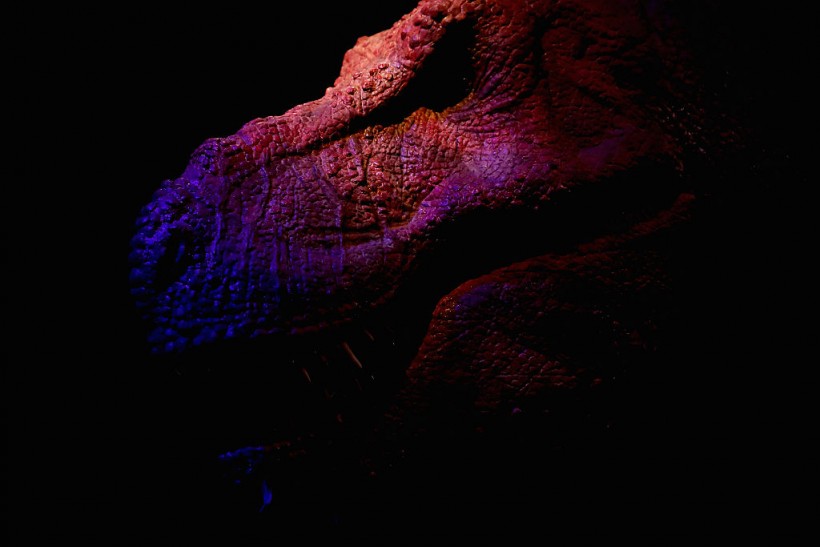People residing in the Pembrokeshire county of Wales were surprised after finding a massive set of footprints on their local beach. The large prints seemingly appeared overnight, which scared some of the citizens of the place.
The footprints were made of 64 steps, and were later identified to belong to the popular carnivorous dinosaurs Tyrannosaurus rex. However, the dotted prints were not legitimate remains of the creature but were only artificial sand murals created by design experts.
The T. rex footprints were laid out across Pembrokeshire's Traeth Llyfn beach. The installation not only baffled locals, but also the tourists and beachgoers.
Dinosaur Footprints Sculpted for New Attenborough-Narrated Dinosaur Documentary

LEIDEN, NETHERLANDS - OCTOBER 17: A mechanical display Tyrannosaurus Rex, a genus of coelurosaurian theropod dinosaur, one of the most well-represented of the large theropods and the Triceratops, a genus of herbivorous ceratopsid dinosaur, one of the last known non-avian dinosaur genera, and became extinct in the CretaceousPaleogene extinction event are pictured before Trix, the female T-Rex exhibition at the Naturalis or Natural History Museum of Leiden on October 17, 2016 in Leiden, Netherlands. The skeleton of Tyrannosaurus rex was excavated in 2013 in Montana, USA, by Naturalis Biodiversity Center. The fossil is part of the Naturalis collection and is more than 80% of the bone volume present. All essential and highvolume bones are in place. This places Trix in the top 3 ranking of the most complete Tyrannosaurus rex skeletons in the world. In addition, all the bones are extremely well preserved. The quality of this fossil is unmatched by any other large T-Rex find in the world.
The dinosaur footprints were created by a team of 10 sand artists. For accuracy, the artists worked in collaboration with actual paleontology specialists. The task ran for about four consecutive hours to complete the long trail of T. rex along the beach.
This design, which was seemingly straight from the Late Cretaceous era, was made for the launch of a scientific documentary titled "Prehistoric Planet."
The show will air on May 23 on the streaming platform Apple TV+. The presentation is led and narrated by Sir David Attenborough. The documentary features music by the prestigious composer Hans Zimmer.
Seventy-two-year-old local passerby Anna Hatton explained in a Mirror report that the T. rex footprints could be seen from a nearby cliff in the area. The dinosaur trail installation is 'amazing,' considering the fact that they are actually big in a closer perspective, the citizen continued.
This is so cool! 🦖🦕🏖️https://t.co/2ZigztTwWh
— Bluestone (@BluestoneWales) May 24, 2022
Sir David Attenborough said that it is a great opportunity to have the experience to see popular dinosaurs such as the Triceratops and the T. rex being brought back to life while actually 'entering' their prehistoric environment that is full of diversity of life during the time.
Prehistoric Planet executive producer Mike Gunton said that the T. rex trail was intended to gain the attention of the people and have an idea for the upcoming documentary. The most effective approach to do this kind of stunt is to bring the dinosaurs back to the present age, he continued.
Highlights: Tyrannosaurus rex
The Tyrannosaurus rex is among the largest meat-eating dinosaurs from the Late Cretaceous era. The beast could grow with a massive length of 13 meters and weigh up to 10 tonnes or about 10,000 kilograms.
Despite our general knowledge about this dinosaur, T. rex could actually swim across water bodies. Fossil studies show that its hind legs are strong enough to propel its bodies through the depths of lakes and rivers.
Computed tomography (CT scan) shows that most of T. rex's theropod cousins also have a hollow structure hidden on their bones which scientists believe are responsible for their floating skills despite their sizes.
In the documentary, unknown features of the T. rex will be presented, including the nerve endings on their faces and how it is utilized by the creature when engaging in communications and courtships. The abundance of feathers on juveniles will also be shown, a physical detail that likely deteriorates as the species age.
The series will also show how their feathers might have additional functions for leadership roles and nest protection.
RELATED ARTICLE: Two Unknown Dolphin Species Discovered in Prehistoric Switzerland
Check out more news and information on Paleontology in Science Times.














